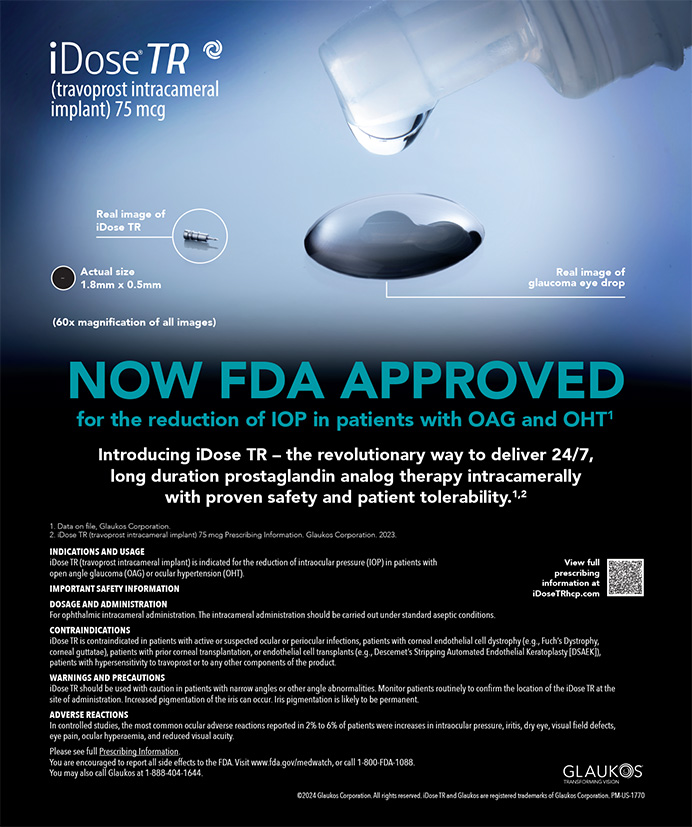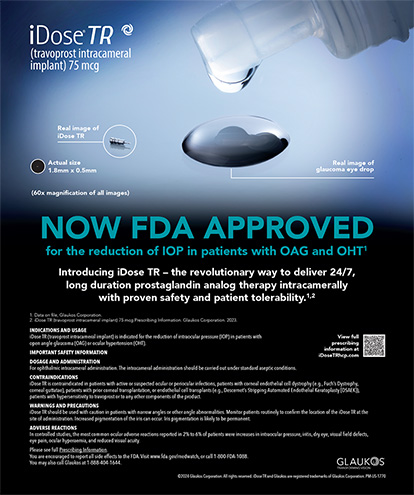
Ophthalmic surgery has advanced at a blistering pace over the past 50 years. Phacoemulsification, IOLs, lasers, biometry, imaging systems, and dozens of ancillary tools help make our patients’ lives better and ease our delivery of surgical eye care. However, one key technology in our ORs has not evolved much at all—the surgical microscope.
Prior to World War II, most ophthalmic surgery was performed with surgical loupes. It wasn’t until the 1960s when the majority of eye surgeons had access to a microscope for operating. Richard Troutman, MD, DSc, one of the most prolific and innovative eye surgeons of all time, did not use a microscope for cataract surgery until 1957. The microscope he used at that time provided basically the same image and magnification we still use more than 60 years later.
I am quite excited that the archaic and uncomfortable conventional microscope now may be on the endangered species list. Two major industry players—Alcon and Carl Zeiss Meditec—have developed and commercialized heads-up 3D digital microscope viewing systems. I, along with a few other surgeons, have already been using these early systems for more than 5 years and have not returned to using oculars.
Most surgeons who have experienced the immersive view on a 3D display are blown away by the image quality, resolution, and the natural body position and ergonomic benefits of operating heads up. Today, we better understand the occupational health hazards of performing microscopic surgery. Most of us who spend significant time looking through the oculars experience chronic back and neck pain and other musculoskeletal issues. I have had multiple steroid injections in my lumbar region for disc-related inflammation, which I attribute to the many years I have spent hunched over a surgical microscope.
Research suggests that the majority of surgeons experience chronic microscope-related injuries. This has become such a hot topic that the AAO has created an ergonomics task force to educate surgeons about the health risks associated with microscope use.
Below the surface of musculoskeletal injuries lurks another risk—surgical complications for our patients. Whether surgeons want to admit it or not, when they operate in an uncomfortable position and feel pain in their necks, backs, or legs, they do not perform as well as they might when they are pain-free. If we hurry to get out of a painful position or are mentally distracted by pain, we can put our patients at risk.
Use of a 3D heads-up display could not only extend our careers but also create a safer environment for our patients to undergo surgery. Operating heads up means we can be relaxed and comfortable during surgery. The secondary benefits of heads-up surgery include increased productivity and profitability for our practices.
Another game-changing feature of 3D digital microscope technology is that it provides a faster learning curve for residents, fellows, and even seasoned surgeons. Eye surgeons coming out of most training programs today spend countless hours standing in an OR looking at a 20-inch, 2D monitor to learn complex skills. Can you imagine how much more competent our colleagues in training will be if they are able to watch and be supervised by their mentors in 3D?
Our retina colleagues are ahead of us in adopting this revolutionary technology. They operate for much longer periods, under higher magnification, and with greater illumination. Steve Charles, MD, FACS, FICS, and Pravin Dugal, MD, among other retina luminaries, have endorsed and switched to heads-up surgery.
The next wave of innovation will involve digital overlays, side-by-side information panels for digital imaging and guidance tools, and real-time OCT to position IOLs and guide nucleus removal.
Don’t be surprised to see other ophthalmic companies enter the 3D microscope space as ophthalmic surgery continues to move toward a more digitally automated, repeatable, and safer era. The next generation of ophthalmologists, with their digital device addictions and multitasking brains, will embrace the digital world of eye surgery and continue to drive innovation forward.
Robert J. Weinstock, MD | Chief Medical Editor




